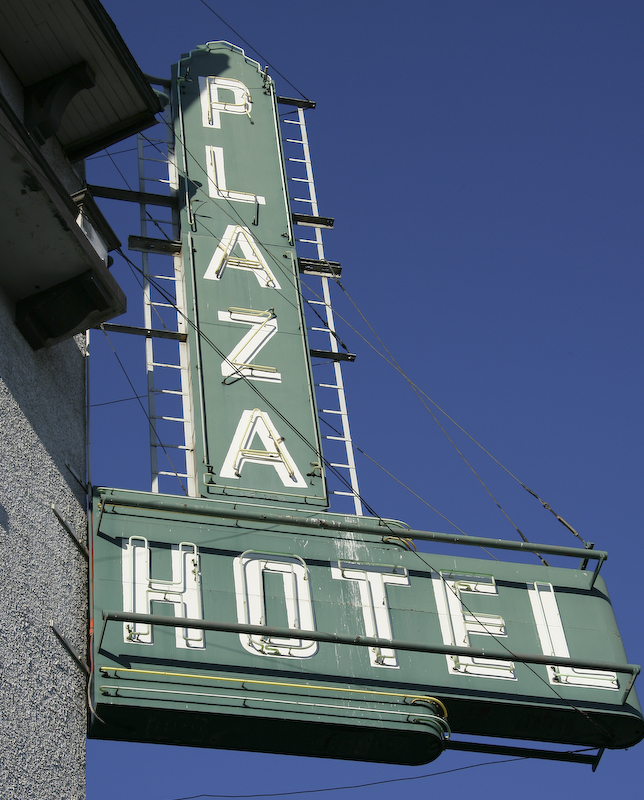
Trip Report: 20070806
The accommodations in Kamloops were adequate. Kamloops is a pretty small place and is not a "destination" resort. It is a nice place, but there are no five star hotels in Kamloops. But, no matter. We were there only one night and things went fine. Next morning, we had to prepare for a 0730 pickup and subsequent departure on the train. The photos below are what we saw.

The Plaza was a fine stop over point, although I could have done without the rowdy teenagers running up and down the halls at midnight. The hotel is old, but in good repair. And, they had wireless internet there.
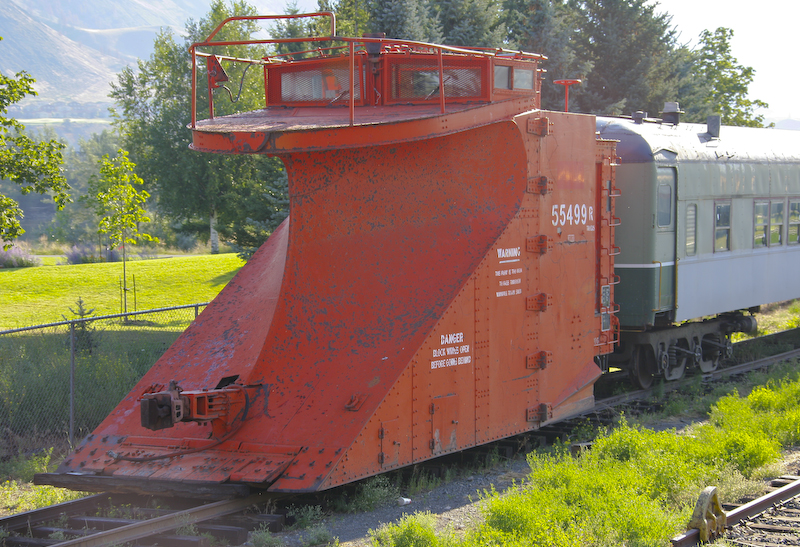
Another push-plow. The Kamloops area gets much snow, despite the generally arid terrain.
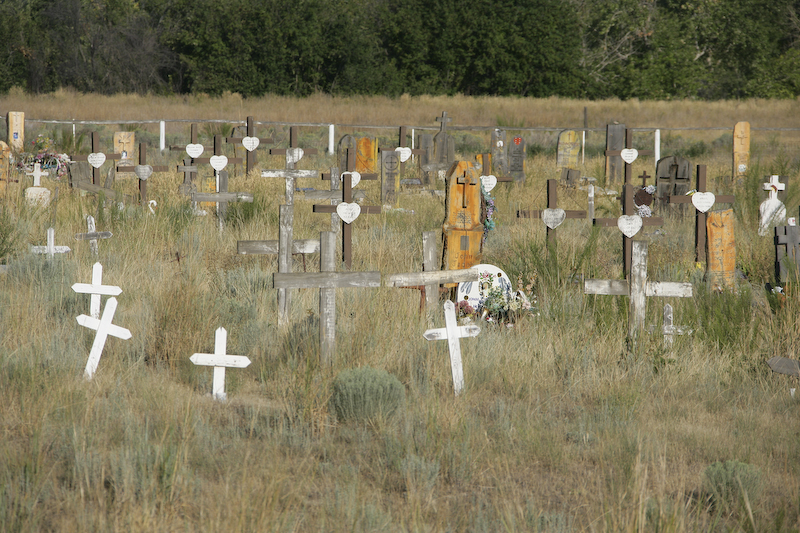
We passed a cemetery on our egress from Kamloops, some of the markers were quite old.
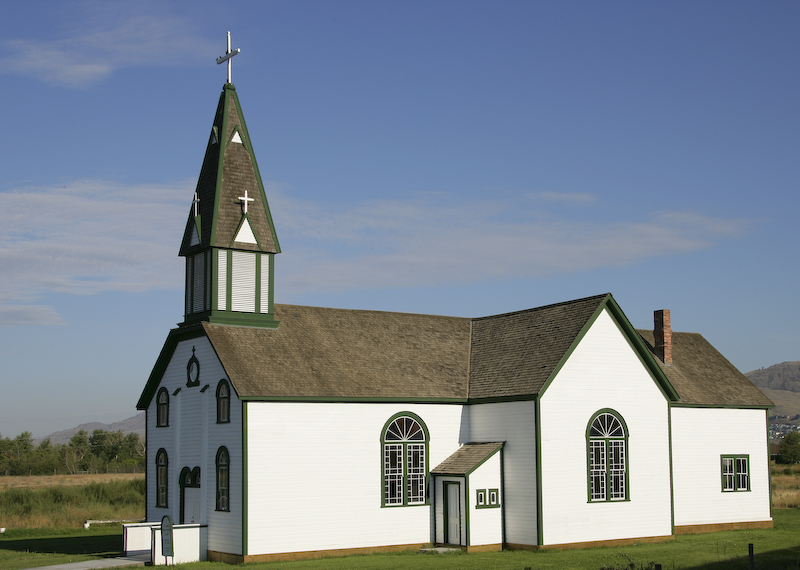
A quaint church associated with the cemetery.

Kamloops has a large lumber processing facility and the process makes a tremendous amount of exhaust. For a variety of reasons, the plant built the smoke stack on the side of the hill where the exhaust plume would be above the thermocline, thus sparing the locals the offensive smell.
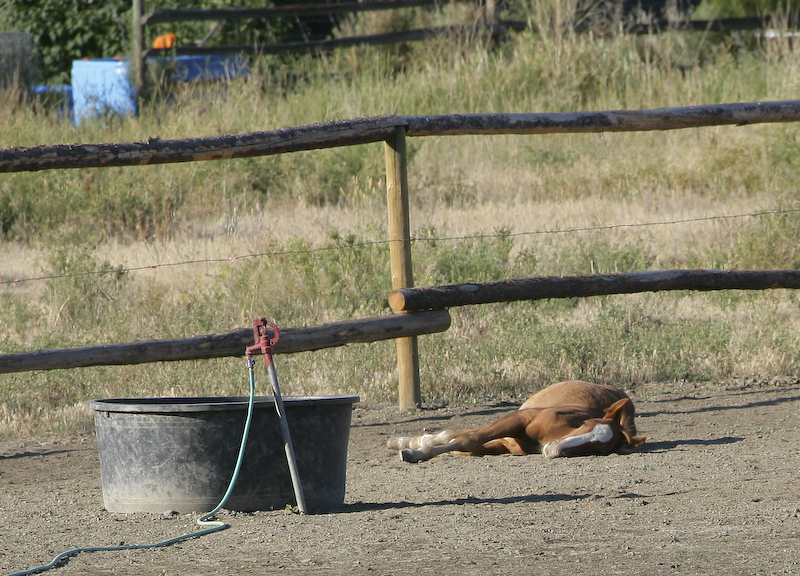
We passed a small ranch next to the tracks. Here a new born colt catches 40 winks. He did not move as we passed by.
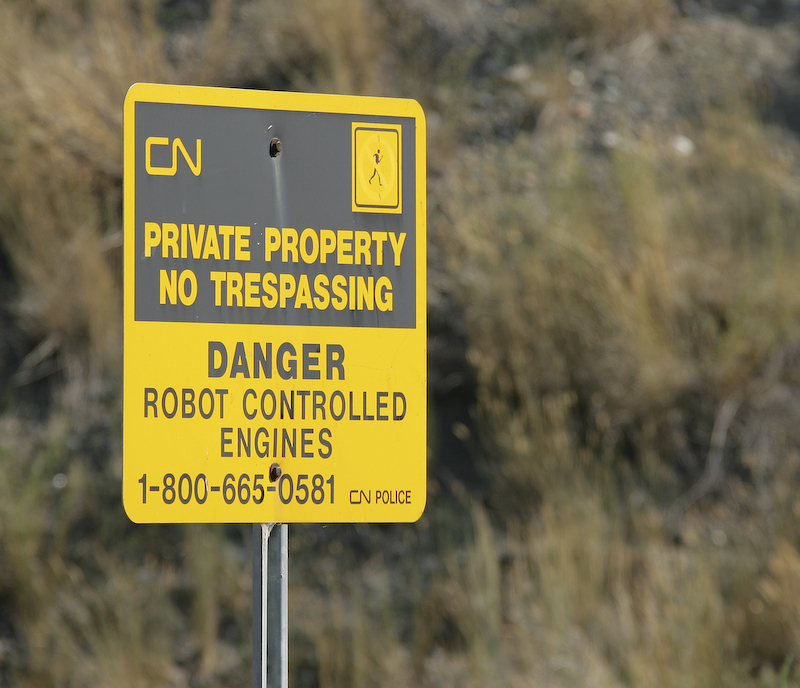
This sign says it all. Later in the day, we saw one of the robot engines. The sign is misleading in that the engines are human controlled, but the humans are not in the cab. Therefore, you should not expect the train to do rational things, like stopping for a car stalled at a grade crossing.
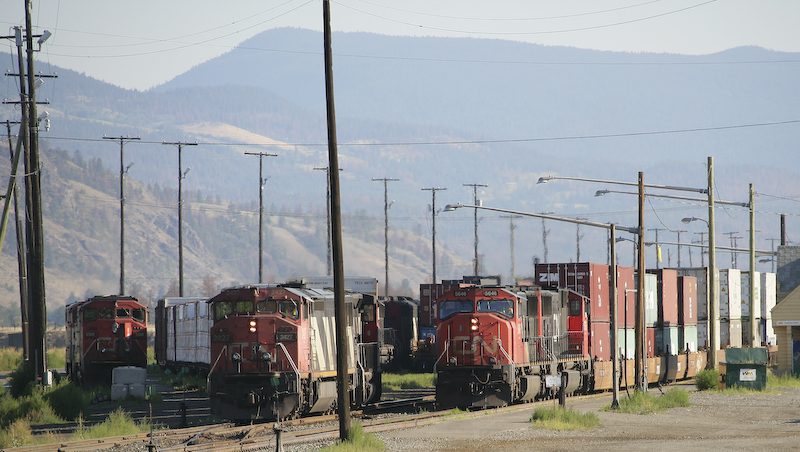
Kamloops has a big rail yard and was full of freighters awaiting their turn to leave. There was a lot of hardware in that yard.
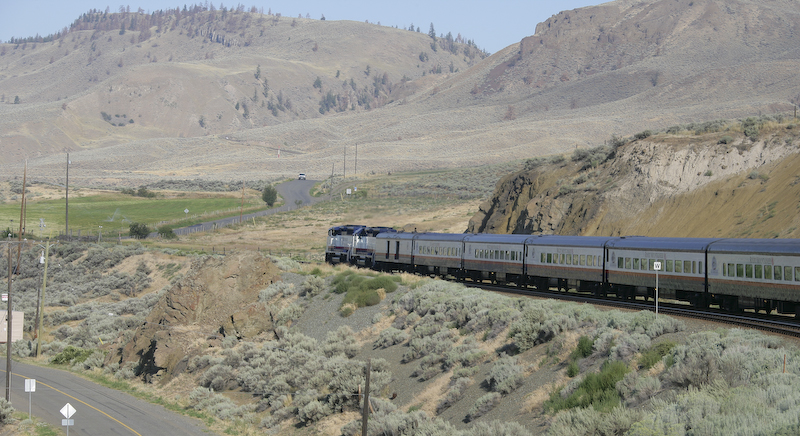
West of Kamloops,the terrain turned arid. The tour guide stated that they get less than 8 inches of rain per year due to their location being in the rain shadow of the western ranges. This area is very similar to eastern Washington state.
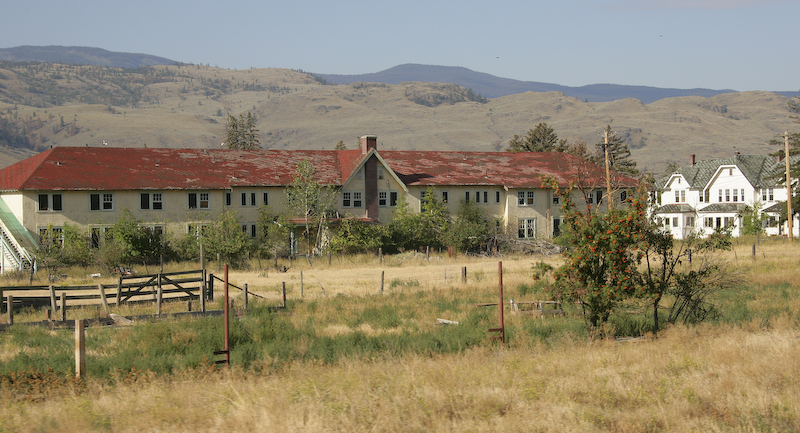
This is an abandoned hospital used to treat TB patients.
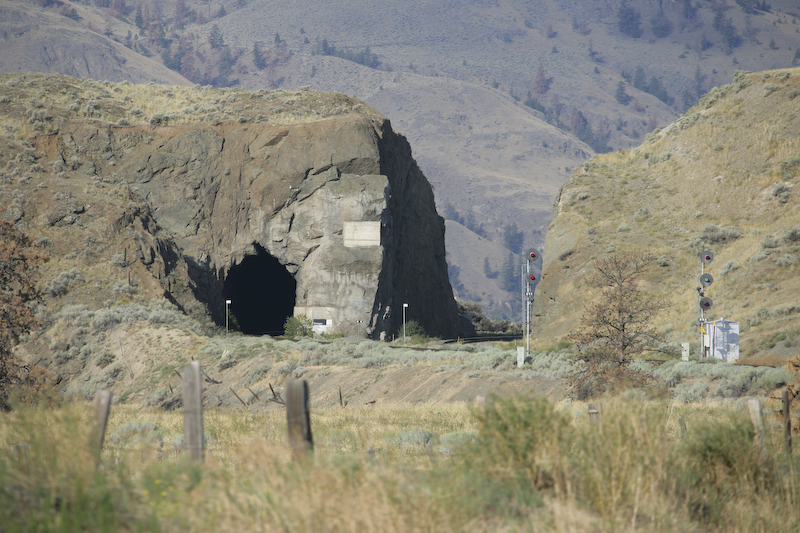
This is an interesting study in how construction techniques have changed over the years. Before the advent of the bulldozer, moving large amounts of material was difficult. The tunnel on the left is the old route. But rather than widening the tunnel, it was easier and more cost effective to blast and remove several times more material to produce the 2 track cut on the right.

A way lucky shot of a bald eagle taken from the viewing vestibule of the train at 50 mph. I was stunned that the camera was able to focus and shoot at that speed, but that is what you pay for in a high-end camera.
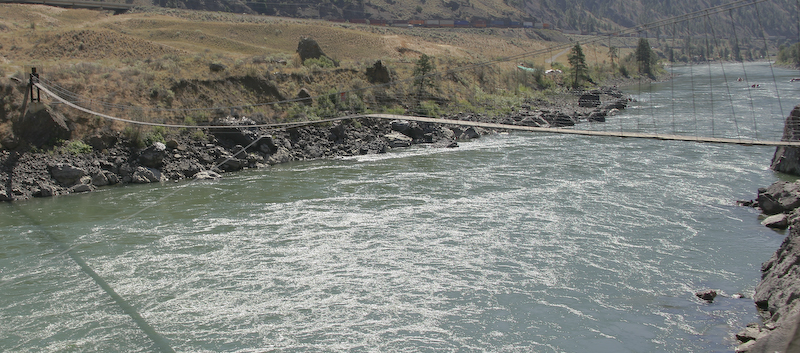
This bridge makes me pucker just thinking about it. The walkway is constructed of 2 2x12 planks. Note the stabilizing cables on the lower left. The walkway spans the North Thompson river.
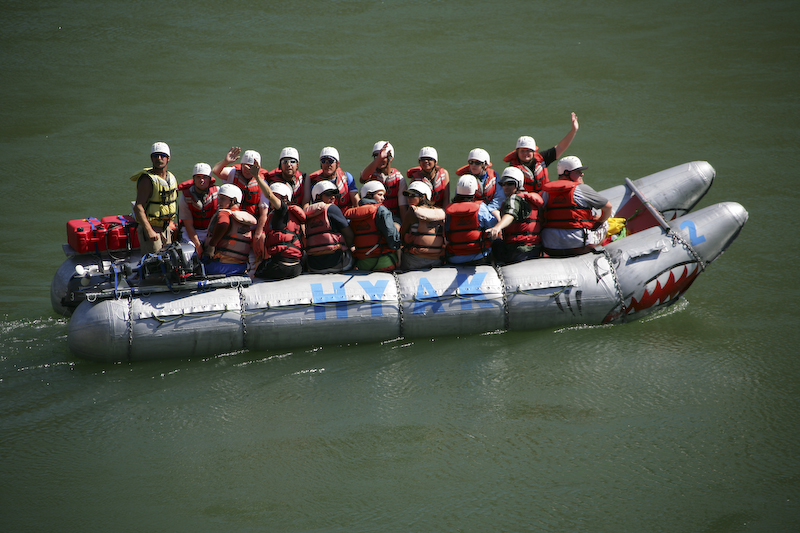
There were plenty of rafters on the Thompson river. It has many rapids in this area.
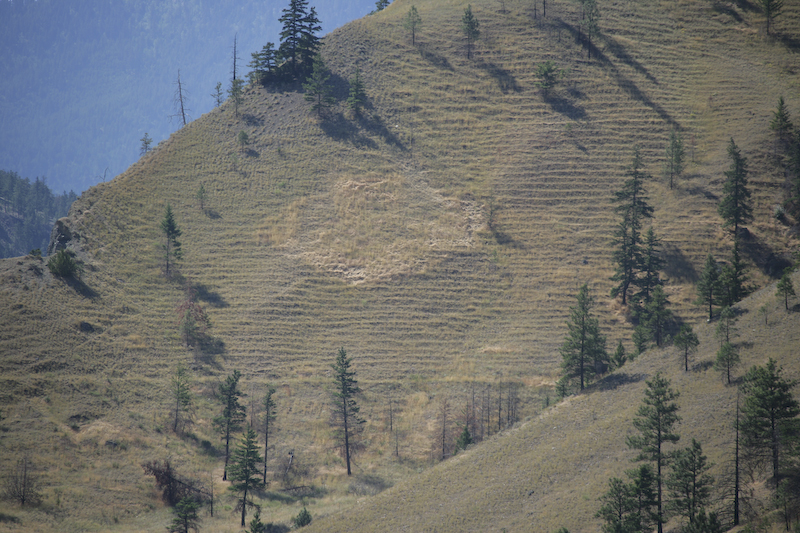
The land in this area is slumping as shown by the wrinkles.
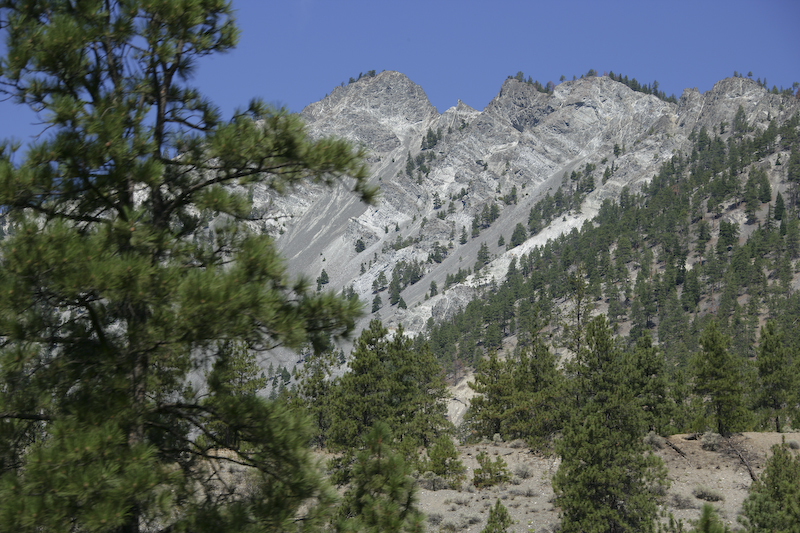
We crossed into a region of taller mountains that were producing large amounts of debris on their faces. Note the scree fields at the base of the cliffs.
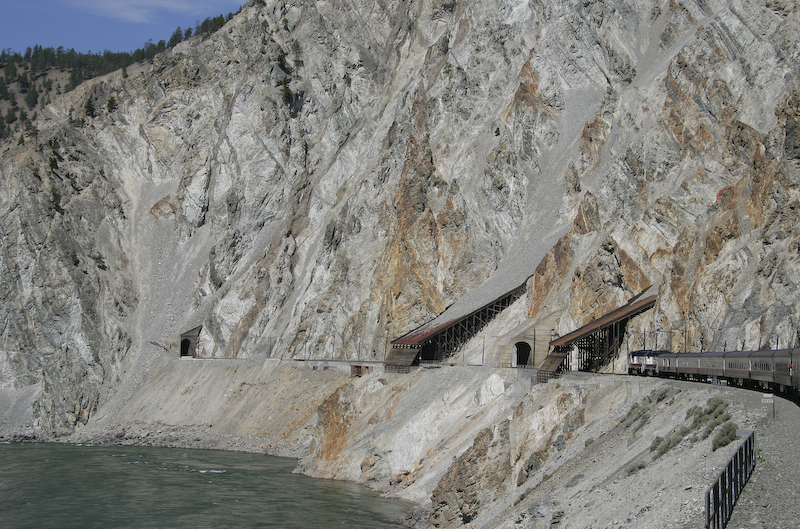
Since the mountains are continuously bleeding rocks, this causes operational issues for the railroad. Here, you can see scree sheds that were constructed to divert the flow of rocks over the tracks.
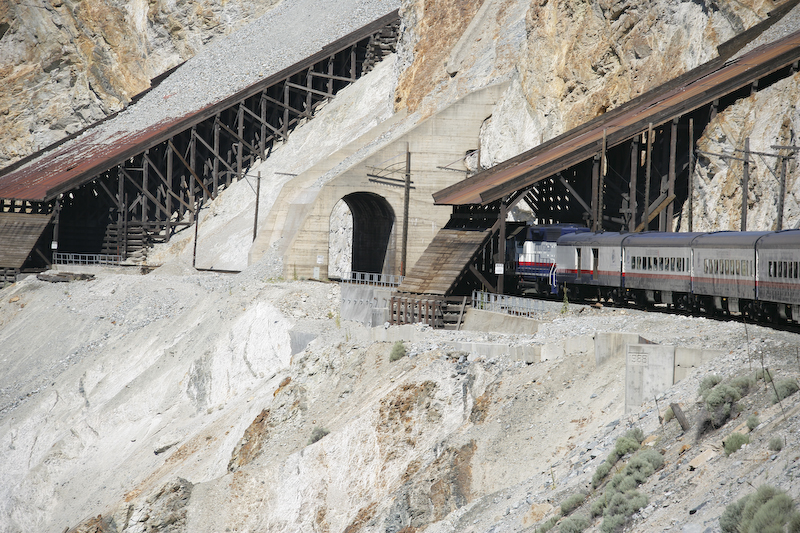
Here is a close up of the sheds. Note the material on the ramps.
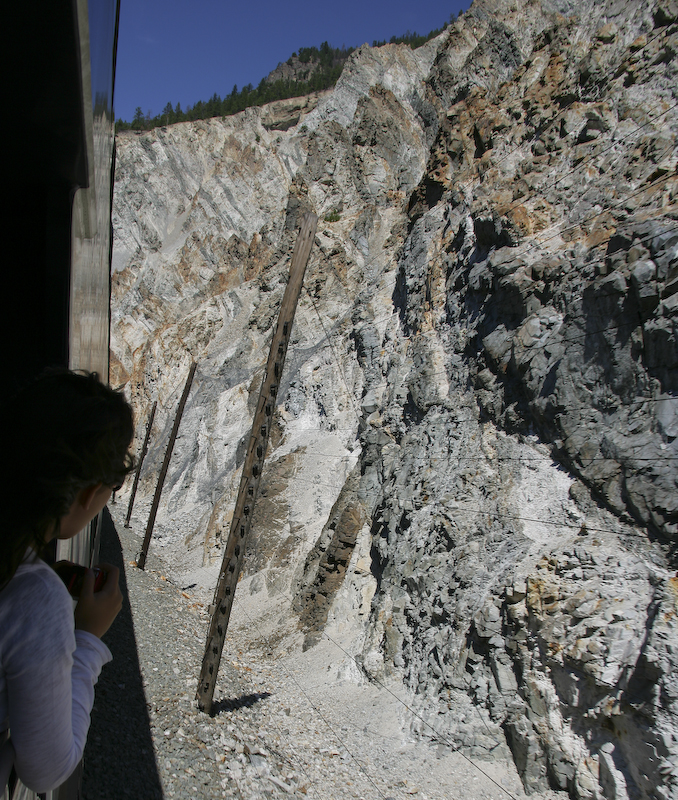
The railroad has built a slide warning system. The wires are part of the system and if a wire is broken, an alarm is sounded.
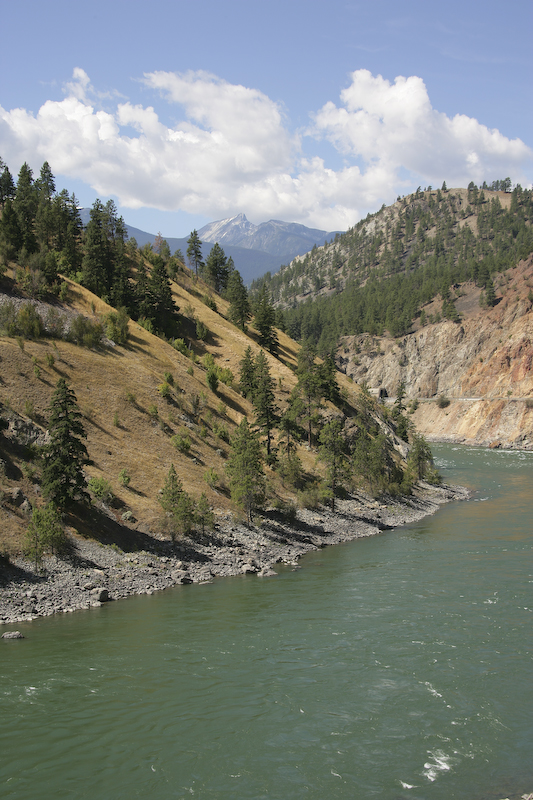
The Thompson River valley.
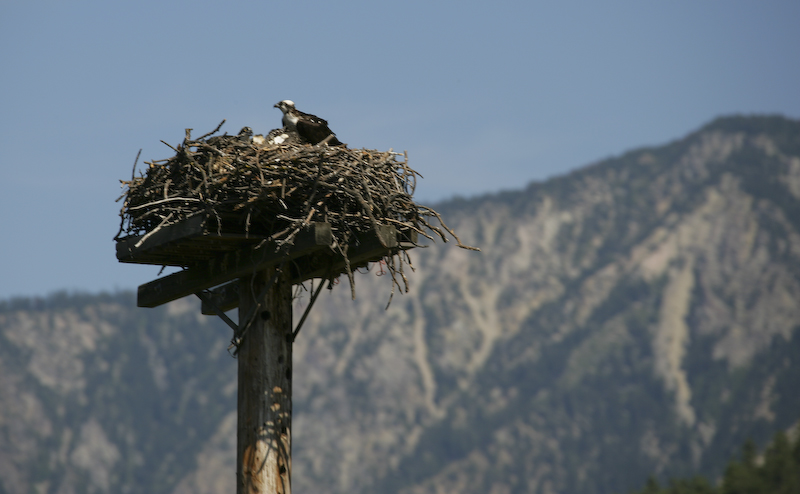
Another osprey nest, this one has chicks.
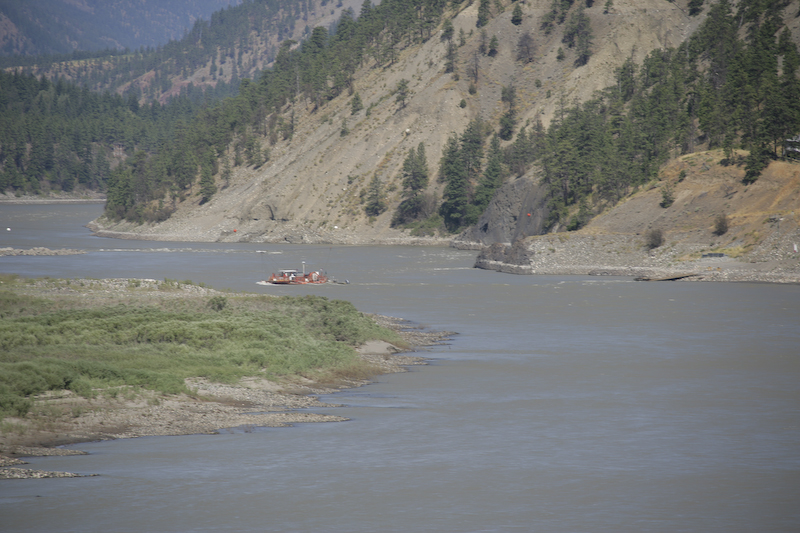
Confluence of the Fraser and the Thompson rivers.
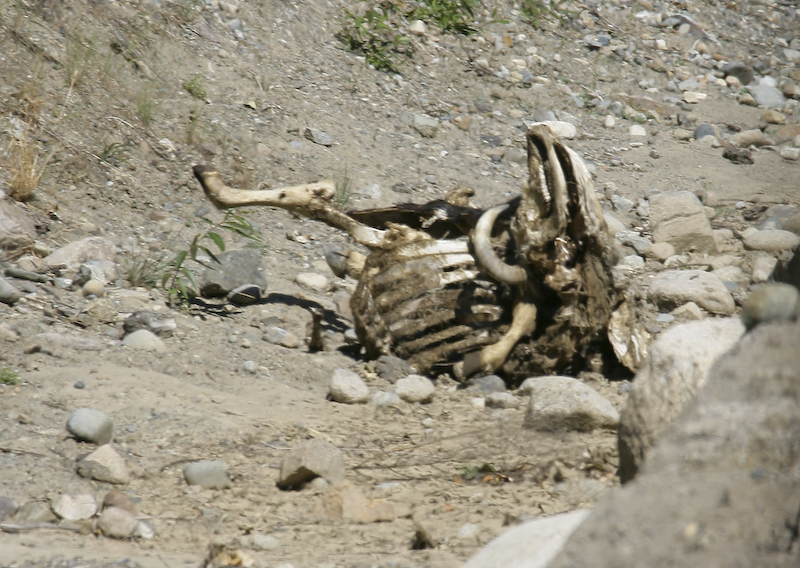
Railroads can be dangerous. In this case, a cow was hit by a freighter and subsequently picked clean by the local animals. Roberto : This is a skinny skinny cow.
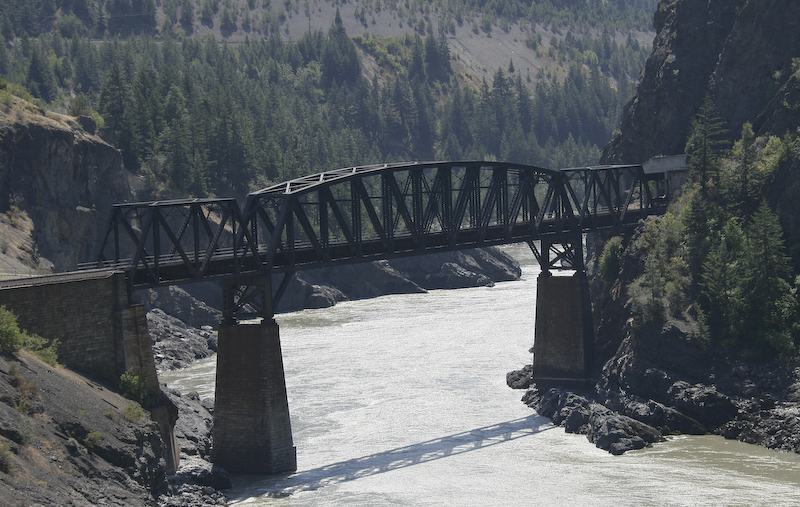
A large bridge that crosses the river. This area has 2 major bridges right next to one another.
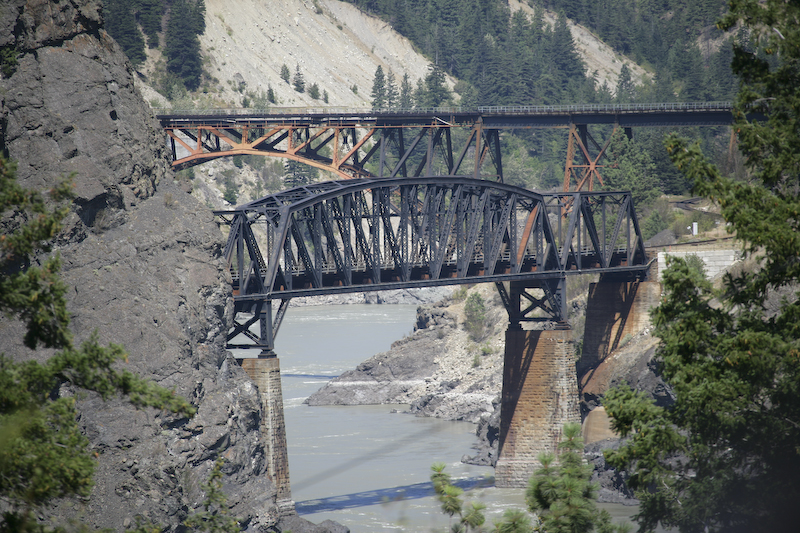
The 2 bridges - one for the Canadian Pacific, the other for the Canadian National.
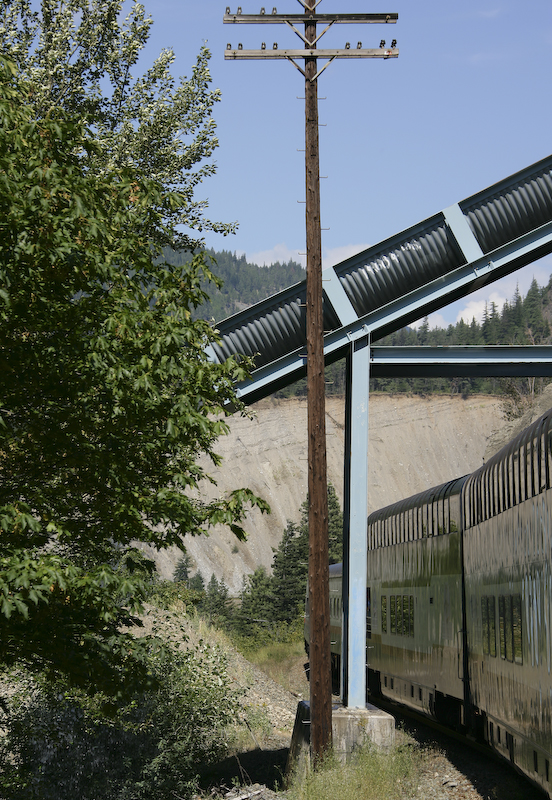
Running a railroad in this area is all about controlling nature. Here is a flume that carries a stream over the tracks as opposed to under it.
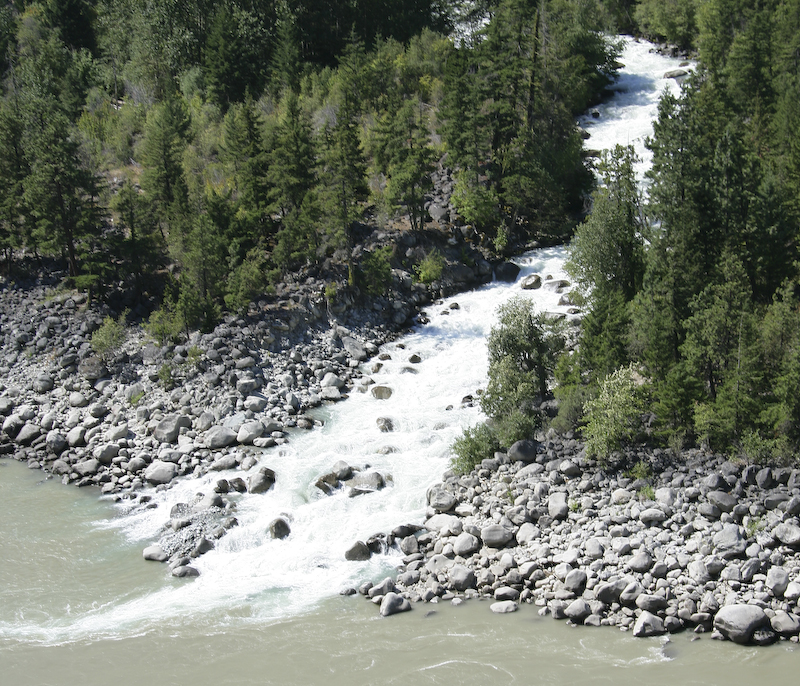
Large rivers and streams met with the main Fraser.

What auto body work and headstones have in common is a mystery.
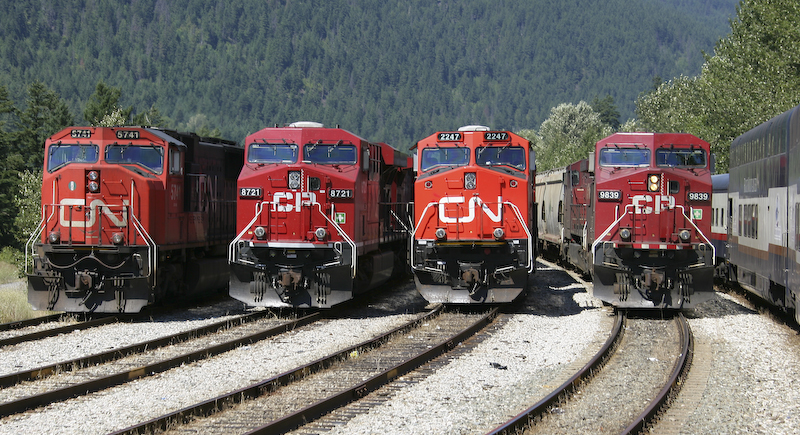
An interesting mixture of CN and CP engines. The Mountaineer is at the far right.
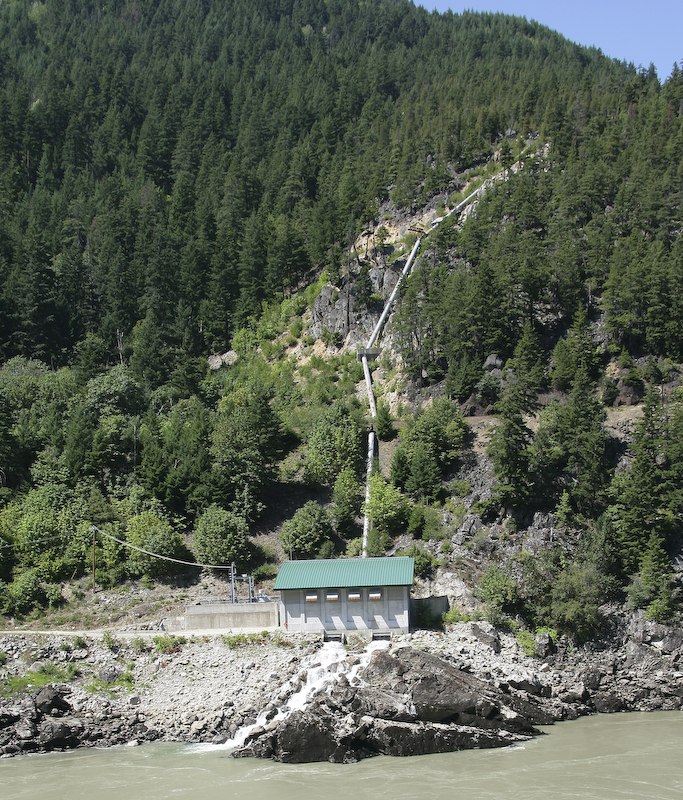
A power house on the side of the river. Note the feed pipe above the power house.
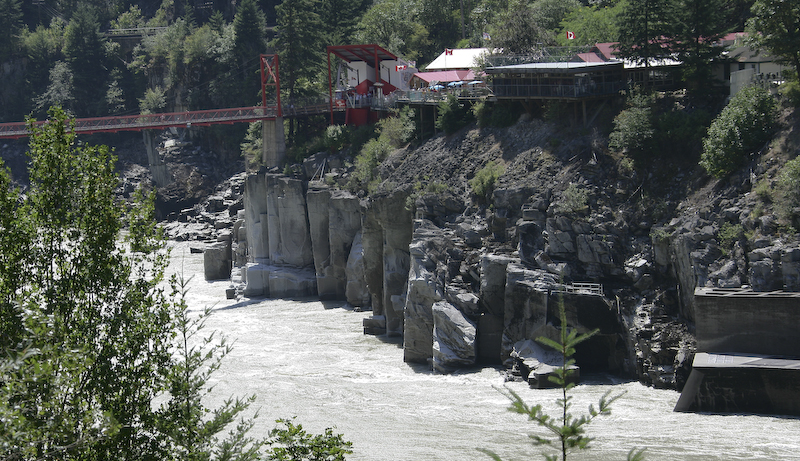
The approach to the Hell's Gate section of the river. Note the bridge over the river and a fish ladder in the lower right.
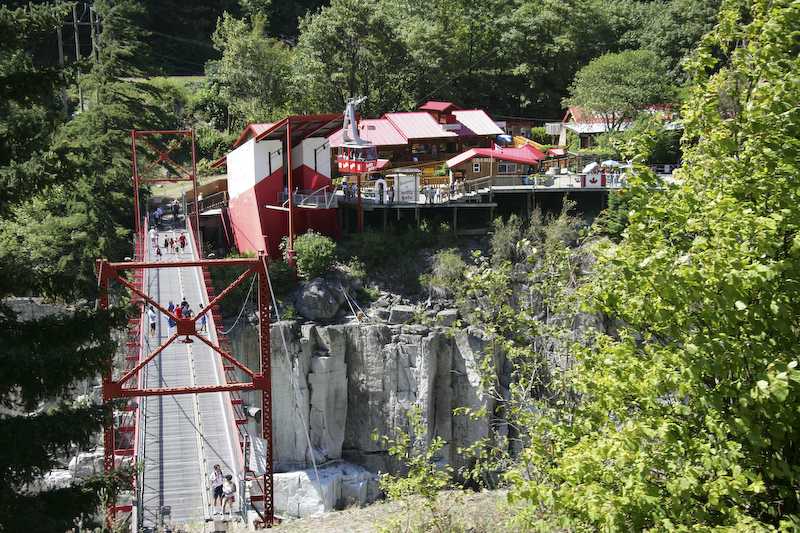
Here you can clearly see the bridge and the gondola that goes to the top of the mountain.
The morning was great with more excellent food and awesome scenery. The next part of the trip would take us into Vancouver itself.
Back to the Road Trip Home Page